In a culture that normalizes and glamourizes disordered eating behaviours, it can be difficult to recognize our own way of relating to food, body, and movement as unsupportive or problematic. Most of us were never taught how to “manage” our concerns over food or our weight without dieting. And given these complications, we might not always know what normal eating looks like for ourselves or how to set realistic expectations for our relationship with food. My objective with this post is to help you to distinguish between a non-diet approach to normal eating grounded in self-care over self-control, and a definition of normal eating that’s actually a low-key version of dieting or disordered eating in disguise.
It’s important to recognize that what “normal eating” looks like for you may differ (sometimes significantly!) from what it looks like for others. Unlike dieting, normal eating is fluid, flexible, and changeable; sometimes it may look like a lot of pizza and pasta, and there may be times when you gravitate more toward snack plates and less hearty fare. The kinds of foods you gravitated to when you were five might not be the ones you went for at twelve, or the ones you enjoy at fifty—and that makes sense. Our tastes, needs, and desires change as we age, and other circumstances (re-locating to another country, for example, or changing jobs) can alter how and what we eat. And as you move away from dieting or disordered eating, you may find your tastes change, too. Many people report tasting foods more deeply as they stop restricting their intake and give themselves full permission to savour what’s on their plates.
And on that note, it’s very common (if not consistently the case) for those new to the intuitive eating process to eat more previously off-limits foods at the beginning. There’s a number of reasons for this that exceed the scope of this post, but just know that if you find yourself craving or consuming more sweets than “usual” or that you’re comfortable with, your body is just doing what it does best: maintaining and striving for homeostasis. Just because you’re eating plenty of donuts, cakes, and cookies are the beginning doesn’t mean it will always be this way, though it’s also okay if you keep wanting them several months in! We’re wired to love sweets, and there’s nothing pathological, wrong, or “bad” about it—despite what food and sugar addiction theorists espouse.
So given these realities, I figured I’d set the record straight on 5 common misconceptions about this thing called “normal eating.” And if you’re interested in learning more about what normal eating looks like for you in theory and practice, I invite you to get on the waitlist for my group coaching program (enrolment opens end of January 2021!) or connect with my team for individual counselling.
Here’s 5 common myths about normal eating:
1. Normal eating looks the same every day.
Despite what your fitness tracker insinuates, our hunger isn’t always a perfect mathematical equation. It’s normal for hunger to vary for a number of reasons (e.g. stress, seasons, movement, menstrual cycle). Some mornings we can’t wait to pour ourselves a hearty bowl of cereal (and maybe serve some eggs, fruit, and/or yogurt on the side, while other mornings our hunger signals may be whisper-quiet. Sometimes we’re less hungry in the morning, but ravenous in the evening—or meal hungry during the middle of the day. But in the same way that we don’t assign judgment to our changeable thirst cues, is it possible for you to eat without judging your hunger signs, too?
2. Normal eating includes very few sweets or no sugar at all.
Normal eating includes all kinds of foods depending on budget, location, climate, and so on — not just so-called “healthy” ones. Normal eating includes some consideration for macronutrient representation — you know, concentrated carbohydrates like grains, starches, and fruit, protein, and fat — as well as some more playful foods, like candy, cookies, chocolate, and cake. Sometimes what we feel is “a lot” of sugar is just a “lot” relative to the standards imposed on us by diet culture. Specific medical conditions aside, our bodies can actually tolerate added sugar and still thrive. In fact, studies have shown that it’s intermittent access to sugar, not allowance, that actually feeds those out-of-control feelings around the sweet stuff.
3. Normal eating is always mindful eating.
While I do think one of the side effects of intuitive eating is an increase in overall mindfulness—with food and life more generally—I don’t think it’s realistic to expect every eating experience to be a mindful one. In fact, I think some variance between distracted and less-distracted eating is to be expected, and a hyper-focus on ensuring every meal is perfectly mindful can be a sneaky form of diet mentality. Sometimes we might eat a bowl of oatmeal mindfully at the table, while other times we may just need to eat that sandwich en route to an appointment or when cradling a crying baby in the interest of getting our energy needs met.
4. Normal eating is always balanced eating.
In the same way that cookies, cakes, and ice cream can all fit in a healthy diet, normal eating sometimes looks like balanced meals—and sometimes less so. While carbohydrates, protein, and fat are all essential to our well-being and each play important functions, it’s totally cool to play around with these macronutrients in the interest of becoming our own personal food anthropologist. Normal eating is having a Caesar salad with chicken because that sounds good, or pasta with marinara sauce and garlic bread, or a host of other combinations that don’t check off the “balance” box.
5. Normal eating is always three meals and two to three snacks.
Normal eating can totally be three meals and two to three snacks (I often meal plan loosely with my clients at the beginning to ensure they’re eating enough as they learn what regular eating feels like for them.) Aaaaand…it can look like two meals and plenty of snacks, or four meals and a piece of fruit, or five meals and…the combinations are endless. I often think about Spain’s meal structure of a small breakfast (often a baked good or toast) followed by a mid-morning snack (such as a sandwich), followed by a large mid-day meal and a very late, smaller dinner. There is no one perfect way to eat, and it’s worth experimenting with—you might surprise yourself! Remember that intuitive eating is essentially a somatic practice; when you find yourself looking for the “right” way to do something related to food, I invite you to remember that there is no one “right” way that works for everyone—and your body is one possible resource to support you in living into the answer.
What misconceptions about “normal eating” have you heard?
Featured
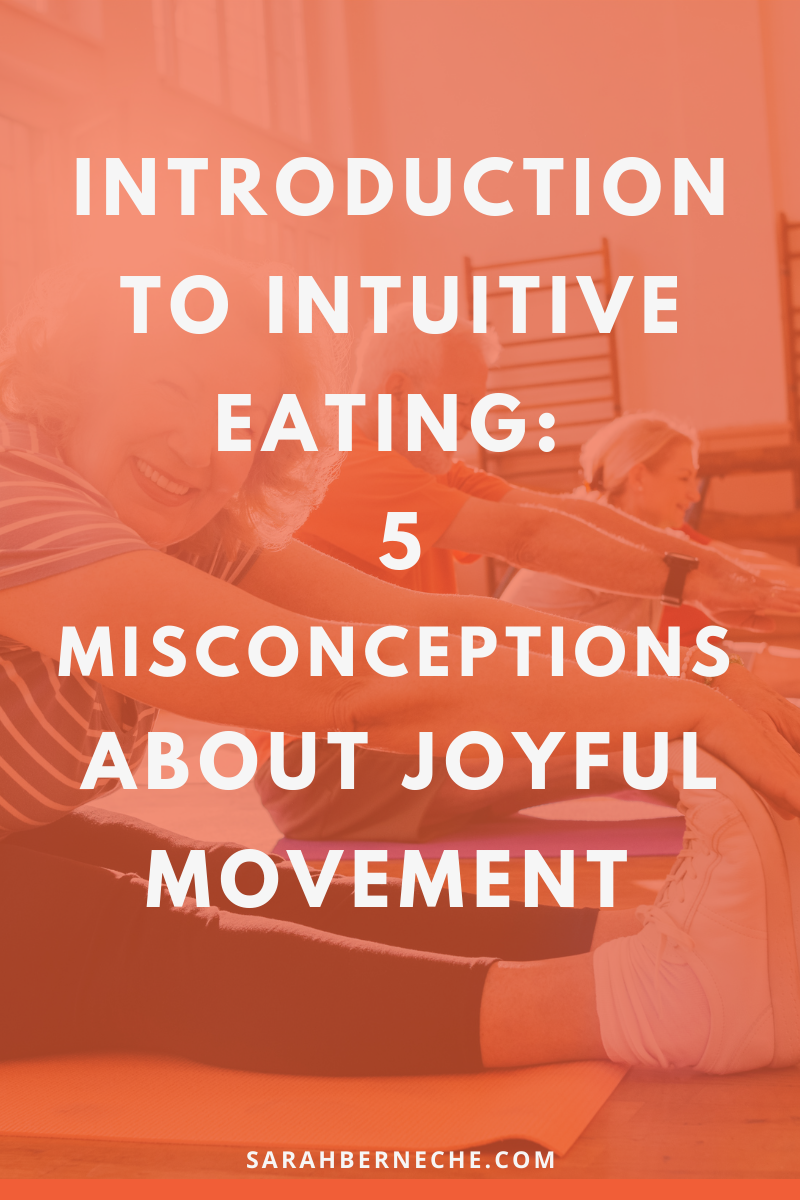
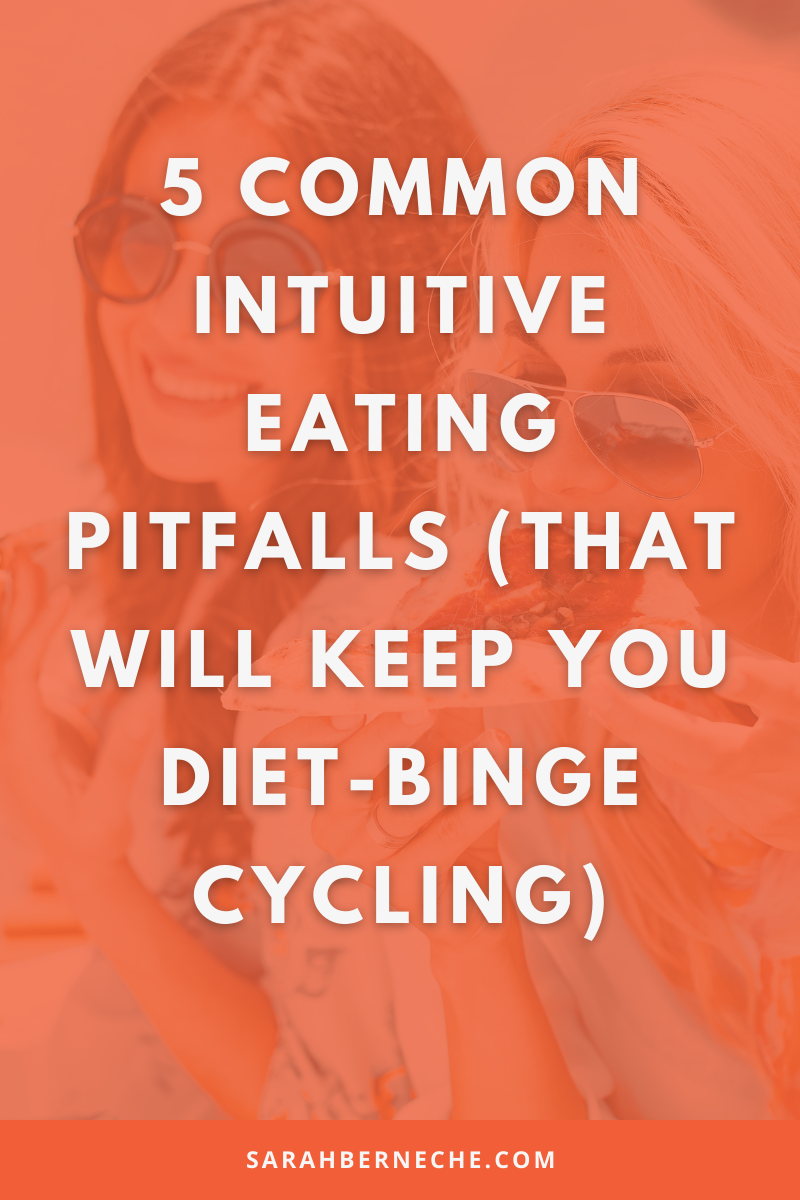
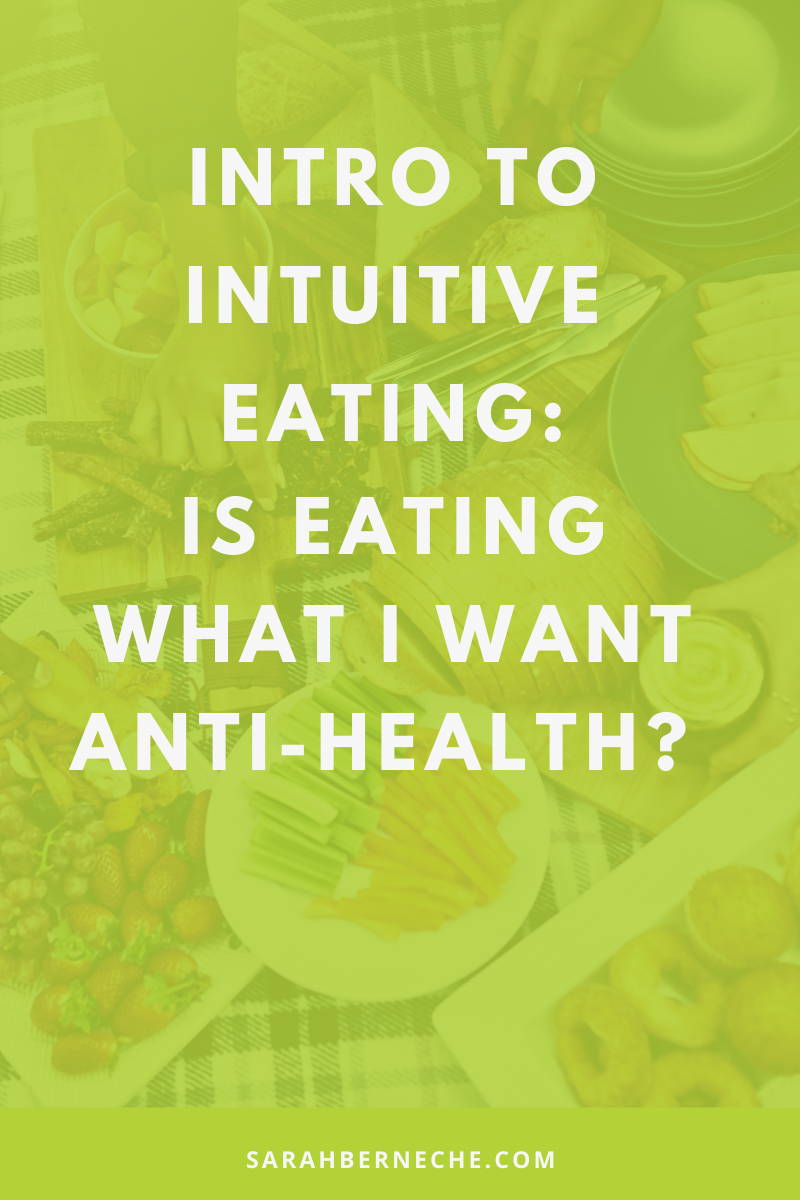
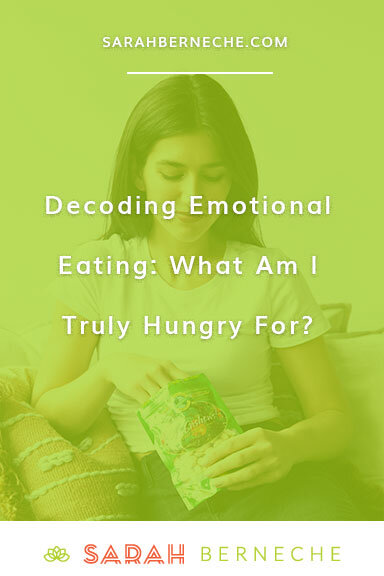
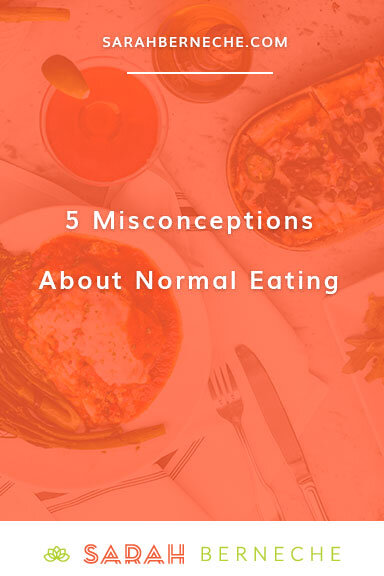

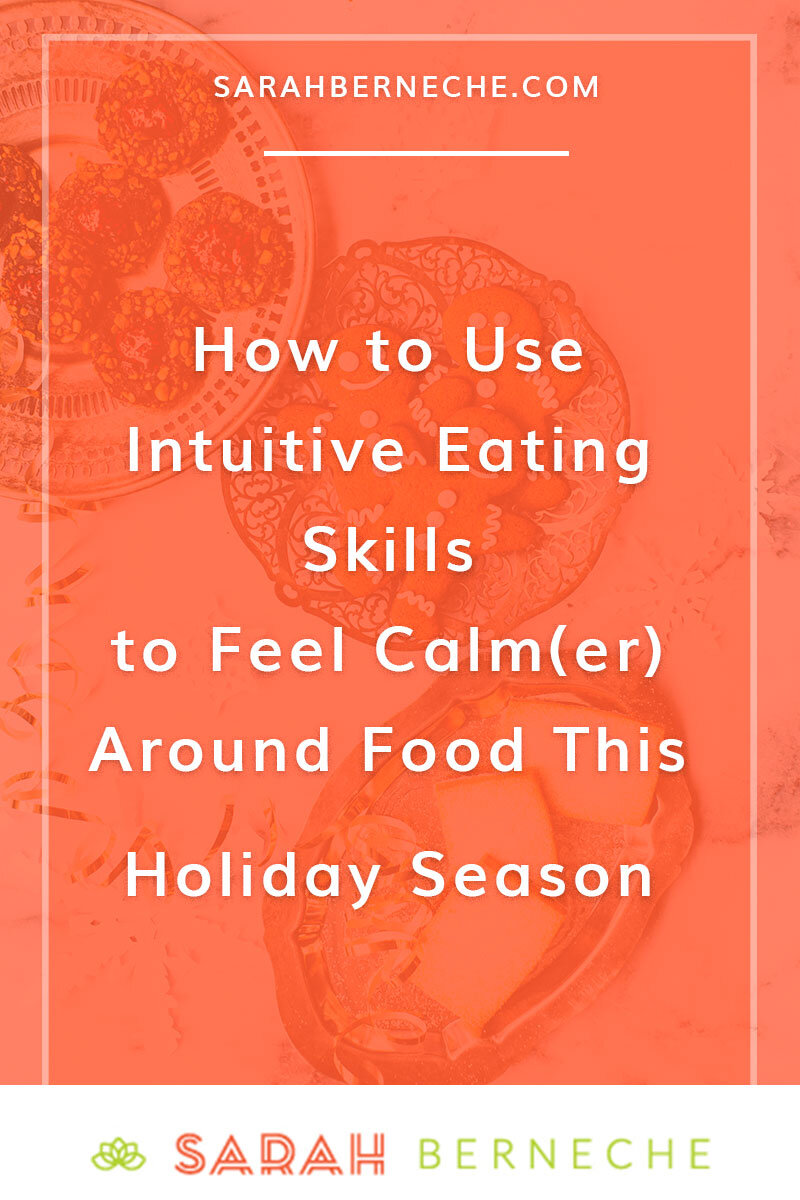
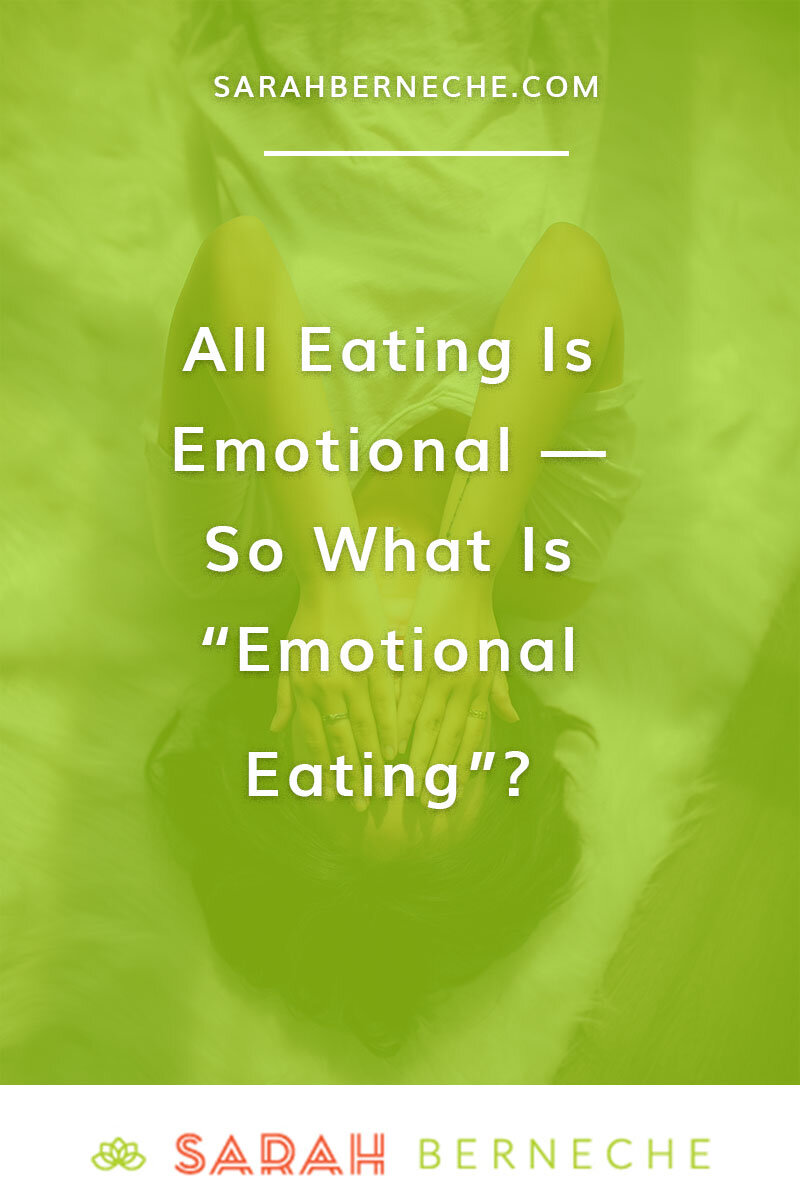
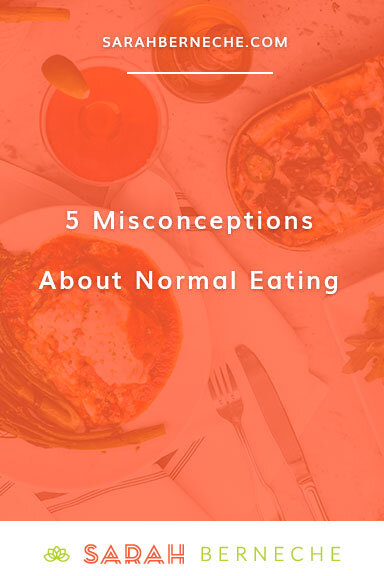
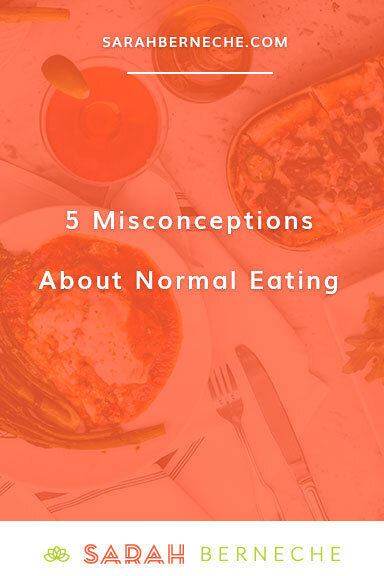
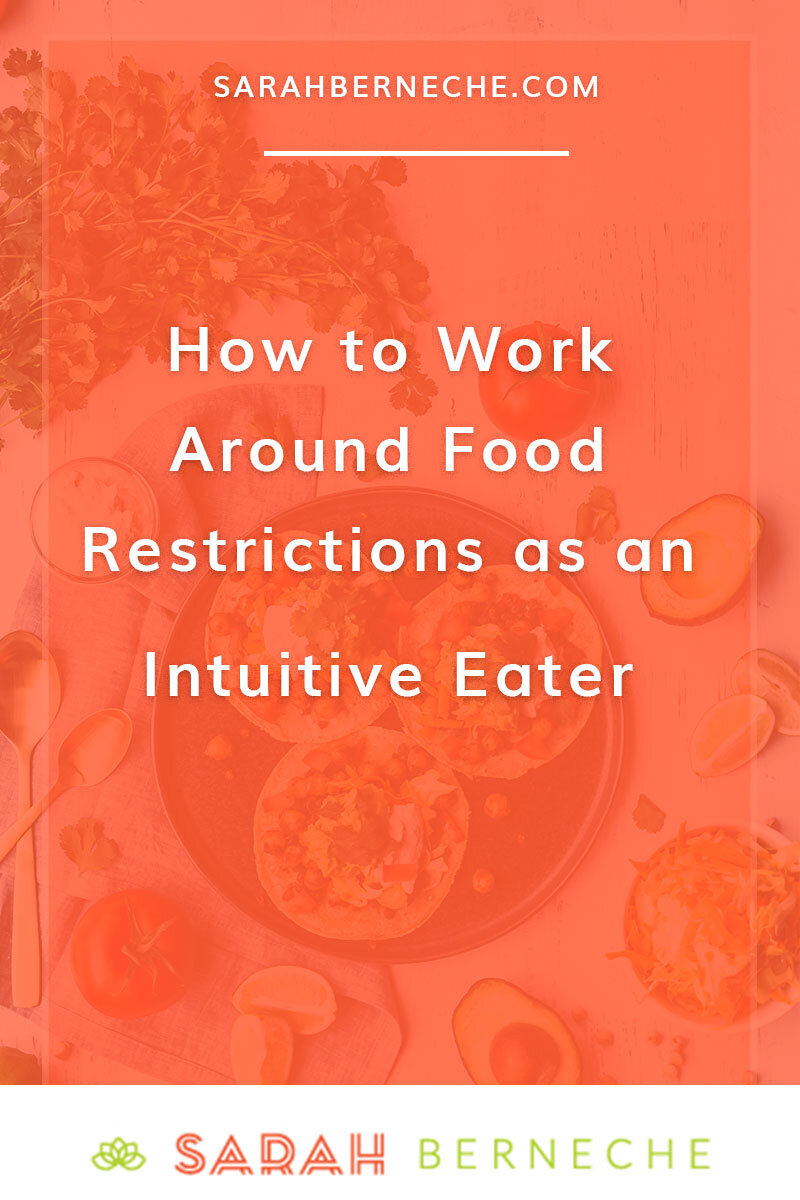

[…] Maybe the goal isn’t to deny our biology or to attempt to combat it. Maybe the goal isn’t to say no (which just leads to danger, danger, danger — eat all the sugar!). Maybe it’s to remind yourself you have unconditional permission to eat. […]